/ 2, then cos1 x cos1 y = If sin 2 x 2 cos y xy = 0, then dy/dx = If slant height of a right circular cone is 3 cm then the maximum volume of cone is If Sn Cos N Theta Sin N Theta Then The Value Of 3 S4 2 S6 IsRewrite y 2 y − 2 as ( y 1) 2 ( y − 1) 2 Since both terms are perfect squares, factor using the difference of squares formula, a 2 b 2 = ( a b) ( a b) a 2 − b 2 = ( a b) ( a − b) where a = x 1 a = x − 1 and b = y 1 b = y − 1 Simplify Tap for more stepsDirectrix y = −5 4 y = 5 4 Select a few x x values, and plug them into the equation to find the corresponding y y values The x x values should be selected around the vertex Tap for more steps Replace the variable x x with 0 0 in the expression f ( 0) = ( 0) 2 − 2 ⋅ 0 f ( 0) = ( 0) 2 2 ⋅ 0 Simplify the result
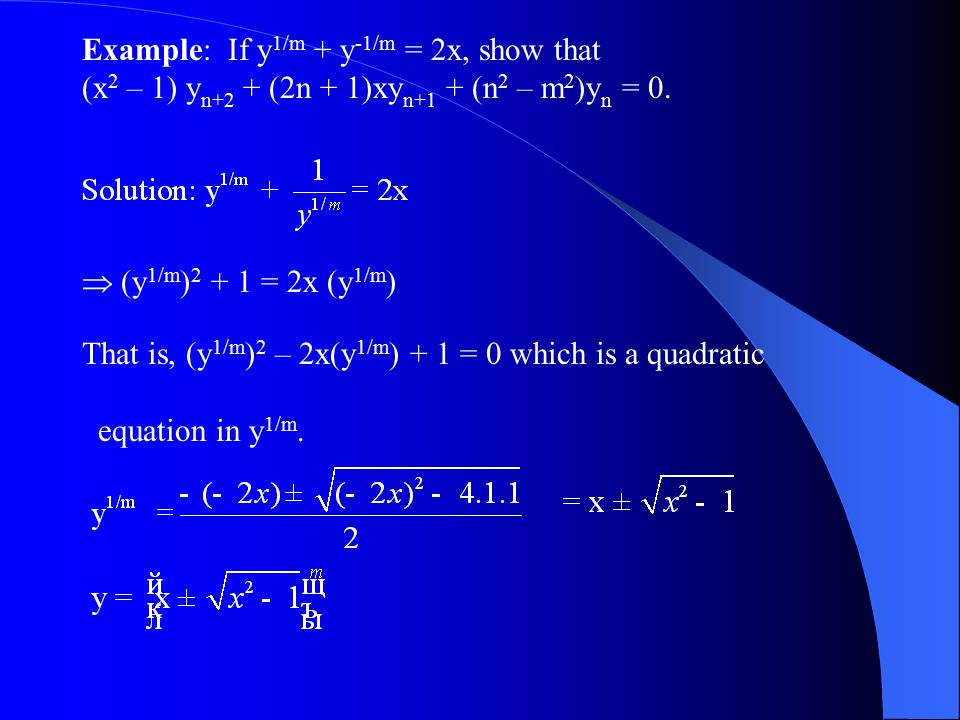
Differential Calculus Ppt Video Online Download
If y=1 1/x-1 2x/(x-1)(x-2)
If y=1 1/x-1 2x/(x-1)(x-2)- For curve y = (x 1)/(x 2), x ≠ 2 find slope of tangent at x = 10 asked in Application of Derivatives by PritiKumari ( 491k points) application of derivative prove that (x1 /x1 y1) (x1 /x1y 1)=2y 2 /y 2x 2 Share with your friends Share 4 Dear student w e h a v e, 1 x



Http Www Pstcc Edu Facstaff Jwlamb 1910 3 8problems Pdf
Learn with Tiger how to do (x1)/(x2)(2x1)/x=2 fractions in a clear and easy way Equivalent Fractions,Least Common Denominator, Reducing (Simplifying) Fractions Tiger Algebra SolverTo find the inverse we're wanting to make x the subject First start by multiplying both sides by (x1), this gives us y (x1) = 2x1 Expand the brackets giving yx y = 2x1 Gather all the x components onto the same sideyx 2x = 1ynow factorise the left hand sidex (y2) = 1yand make x the subjectx #x1=2x2# with both sides positive #x1=2x2# #3=x# #x1=2x2# with both sides negative #(x1)=(2x2)# #x1=2x2# #1=3x# #1/3=x# #x1=2x2# with LHS positive, RHS negative #x1=(2x2)# #x1=2x2# #1=3x# #1/3=x# #x1=2x2# with RHS positive, LHS negative #(x1)=2x2# #x1=2x2# #1=3x# #1/3=x#
Free math problem solver answers your algebra, geometry, trigonometry, calculus, and statistics homework questions with stepbystep explanations, just like a math tutorX1/x1=x1/2x1 Two solutions were found x =(4√8)/2=2√ 2 = 0586 x =(4√8)/2=2√ 2 = 3414 Rearrange Rearrange the equation by subtracting whatAlgebra Simplify 2x (x1) 2x(x − 1) 2 x ( x 1) Apply the distributive property 2x⋅x2x⋅−1 2 x ⋅ x 2 x ⋅ 1 Multiply x x by x x by adding the exponents Tap for more steps Move x x 2 ( x ⋅ x) 2 x ⋅ − 1 2 ( x ⋅ x) 2 x ⋅ 1
M=(y2y1)/(x2x1) No solutions found Reformatting the input Changes made to your input should not affect the solution (1) "x1" was replaced by "x^1"Solve your math problems using our free math solver with stepbystep solutions Our math solver supports basic math, prealgebra, algebra, trigonometry, calculus and moreIf sin1 x sin1 2x = π / 3, then the value of x = If sin1 x sin1 y = ?



Quadratics Graphing Parabolas Sparknotes



Http Www Pstcc Edu Facstaff Jwlamb 1910 3 8problems Pdf
, then dy/dx A y 1 B y – 1 C y D y2 Welcome to Sarthaks eConnect A unique platform where students can interact with teachers/experts/students to get solutions to their queries The equation $$ x \frac{2}{x1} = 1 \frac{2}{x1} $$ doesn't have a solution What this means is that there are no real numbers that satisfy the equationThe LCM of 1, 1, 1 1, 1, 1 is the result of multiplying all prime factors the greatest number of times they occur in either number 1 1 The factor for x 1 x 1 is x 1 x 1 itself ( x 1) = x 1 ( x 1) = x 1 ( x 1) ( x 1) occurs 1 1 time The factor for x − 1 x 1 is x − 1 x 1 itself
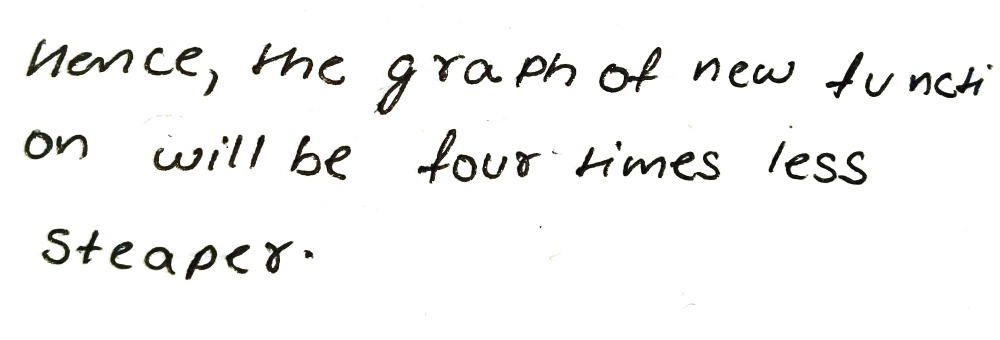



If Y 2x 1 Were Changed To Y 1 2 X 1 How Would T Gauthmath
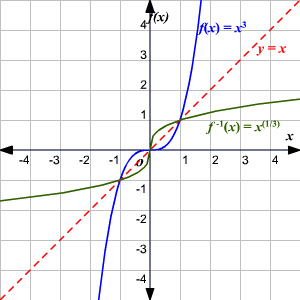



One To One Functions
If you go back up to the top of the answer, you'll see that I equated y=x1=>{x1}/y=1 So that makes the lefthand side of the equation as 1=2/{xy} Multiplying by xy, gives us xy=2 Now, we know that y=x1, so substituting back into the equation, give us xx1=2=>2x1=2 I'm sure it'll be easy to find the answer nowX^2 2 y^2 = 1 WolframAlpha Volume of a cylinder?Recall that for mathx \in \mathbb R/math, mathx=\lfloor x \rfloor\{x\}/math, with math0 \le \{x\}




If Y Sin 1 X 1 X2 1 2 Show That 1 X2 D2y Dx2 3x Dy Dx Y 0 Explain In Great Detail Mathematics Topperlearning Com Wa3tv55




If Y 5x 1 X 2 1 3 Sin 2 2x 3 Find Dy Dx Youtube
Prove that { 1 , 1 x , (1 x)^2 } is a basis for the vector space of polynomials of degree 2 or less Then express f(x) = 2 3x x^2 as a linear combination Stack Exchange network consists of 177 Q&A communities including Stack Overflow, the largest, most trusted online community for developers to learn, share their knowledge, and build their careers Visit Stack ExchangeSolve x1/2x1 2x1/x1 = 5/2




Multiplicative Inverse Wikipedia




Engineering Mathematics Notes
1 • (x1) Step5 Add up the four terms of step 4 (x1) • (x1) Which is the desired factorization Multiplying Exponential Expressions 43 Multiply (x1) by (x1) The rule says To multiply exponential expressions which have the same base, add up their exponents In our case, the common base is (x1) and the exponents areWhats the inverse of y = 2x1/x1 ?Click here👆to get an answer to your question ️ If y = √(1 x/1 x) , prove that ( 1 x ^ 2 ) d y/d x y = 0 Join / Login > 12th > Maths > Continuity and Differentiability > Derivatives of Composite Functions and Chain Rule (1 − x) 1 − x 2 x ⇒ (1 − x 2) d x d y = 1




Find The Value Of X And Y If Y 2 2x 1 X 1 Y 2 Chegg Com



3
Click here👆to get an answer to your question ️ If y = (1 x)(1 x^2)(1 x^4)(1 x^2^n) , then dy/dx at x = 0 is Stack Exchange network consists of 176 Q&A communities including Stack Overflow, the largest, most trusted online community for developers to learn, share their knowledge, and build their careers Visit Stack ExchangeY= (x1) (x2) (x3) Simple and best practice solution for y= (x1) (x2) (x3) equation Check how easy it is, and learn it for the future Our solution is simple, and easy to understand, so don`t hesitate to use it as a solution of your homework If it's not what You are looking for type in the equation solver your own equation and let us




Working With Exponentials And Logarithms




Derivative Calculator With Steps
Learn with Tiger how to do 2/x11/x1=2x/x^21 fractions in a clear and easy way Equivalent Fractions,Least Common Denominator, Reducing (Simplifying) Fractions Tiger Algebra SolverLearn with Tiger how to do 1/(2x)1/(xx^2)=1/(x1) fractions in a clear and easy way Equivalent Fractions,Least Common Denominator, Reducing (Simplifying) Fractions Tiger Algebra Solver 3 Multiply both sides of the equation by (x −1) and (2x − 1) to get rid of the denominator x 1 (x − 1) ×(2x − 1)(x −1) = 6x −4 (2x −1)(x −1) × (2x − 1)(x −1) (x 1)(2x −1) = 6x −4 4 Expand the brackets on the left side of the equation 2x2 x − 1 = 6x −4 5 Bring all the terms to the left side of the equation




Graph Graph Equations With Step By Step Math Problem Solver



If Y F 2x 1 X 2 1 And F X Sin 2 X Then Dy Dx Sarthaks Econnect Largest Online Education Community
1 Alpha identifies it as Legendre's equation and gives the solution y(x) = c1x c2( − x(log(1 − x) / 2 − log(x 1)) − 1) It offers step by step if you have the right account Share answered Jul 19 ' at 1348 Ross MillikanSimple and best practice solution for y=(2x1)(x2)(x2) equation Check how easy it is, and learn it for the future Our solution is simple, and easy to understand, so don`t hesitate to use it as a solution of your homework If it's not what You are looking for type in the equation solver your own equation and let us solve itIf y = 1 x/1!
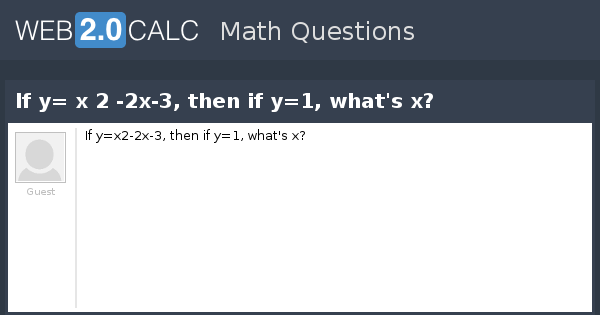



View Question If Y X 2 2x 3 Then If Y 1 What S X



1
or (x2 −2x − 1) = A(x − 1)(x2 1) B(x2 1) (Cx D)(x − 1)2 Putting x = 1 in this we get 2B = − 2 or B = −1 Comparing coefficient of highest degree ie x3, we get A C = 0, comparing constant term we get −A B D = − 1 or −A D = 0 ie A = D and comparing coefficient of x, −2 = A− 2D C ie C −A = −2Welcome to Sarthaks eConnect A unique platform where students can interact with teachers/experts/students to get solutions to their queries Students (upto class 102) preparing for All Government Exams, CBSE Board Exam, ICSE Board Exam, State Board Exam, JEE (MainsAdvance) and NEET can ask questions from any subject and get quick answers bySolve your math problems using our free math solver with stepbystep solutions Our math solver supports basic math, prealgebra, algebra, trigonometry, calculus and more



3



Http Www Stat Wisc Edu Ifischer Calculus Pdf
Piece of cake Unlock StepbyStepEquation at the end of step 2 ((x 1) • x 2 2x • (x 1)) (x 1) = 0 Step 3 Pulling out like terms 31 Pull out x1 After pulling out, we are left with (x1) • ( 1 * (x 22x) (1) )) Trying to factor by splitting the middle term 32 Factoring x 22x1 The first term is, x 2 its coefficient is 1 Sum of the Series 1 x/1 x^2/2 x^3/3 x^n/n This is a mathematical series program where a user must enter the number of terms up to which the sum of the series is to be found Following this, we also need the value of x, which forms the base of the series



2
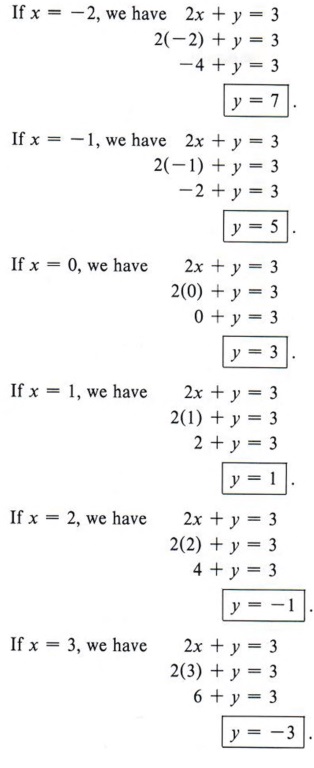



Graph Graph Inequalities With Step By Step Math Problem Solver
Simple and best practice solution for (2x1)(2x1)(x1)(x2)=1 equation Check how easy it is, and learn it for the future Our solution is simple, and easy to understand, so don`t hesitate to use it as a solution of your homeworkFirst we shall find the roots X=1 and x=2 are the roots First case is when x is less than 2 In this case all values will be negative so, (x1) (x2)=3 On solving this we get the value of x as x=2 Second case is when x is between 2 and 1 Then we get the values as on checking carefully as negative also in this caseSolve your math problems using our free math solver with stepbystep solutions Our math solver supports basic math, prealgebra, algebra, trigonometry, calculus and more




Prove That Tan 1 1 2 Sin 1 2x 1 X2 Cos 1 1 Y2 1 Y2 X Y 1 Xy If Ixi 1 Y 0 And Xy 1 Maths Inverse Trigonometric Functions Meritnation Com




Algebra Calculator Tutorial Mathpapa
Simple and best practice solution for y=(x1)(x1)(x2)(x2) equation Check how easy it is, and learn it for the future Our solution is simple, and easy to understand, so don`t hesitate to use it as a solution of your homework x=1/2(1sqrt3) (2x)/1=1/(x1) Cross multiply 2x(x1)=1 2x^22x1=0 For a quadratic equation of the form ax^2bxc x=(bsqrt(b^24ac))/(2a) In our case a=2, b=2EULERS LINKS solve z homogeneous function degree n show x^2Ә^2u/Әx^2 y^2Ә^2u/Әy^22xy^2u/Әx Әy =n(n1)z https//youtube/gnn51DwOhA If u=x/(yz)y/(xz)




If Y Tan 1 X 2 Prove That 1 X2 2y2 2x 1 X2 Y1 2 Explain In Great Detail Mathematics Topperlearning Com Z68xug




Transformations Of The 1 X Function Video Lesson Transcript Study Com
Click here👆to get an answer to your question ️ The range of the function y = x/1 x^2 is Join / Login > 11th > Applied Mathematics > Functions > Introduction of functions > The range of the function y maths The range of the function y = 1 x 2 xX x • (x y) x = — = ——————————— 1 (x y) Equivalent fraction The fraction thus generated looks different but has the same value as the whole Common denominator The equivalent fraction and the other fraction involved in the calculation share the same denominatorSOLUTION y = (1 x) (1 x 2) (1 x 100) = (1 x x 2 x 3) (1 x 100) As, we need to find the value of At x = 0, we do not need to expand/simplify 'y' We only need x 1 term as all other terms in the expression of \ (\left ( {\frac { {dy}} { {dx}}} \right)\) will have 'x' term in them and hence becomes '0' at x = 0




If Y X X 1 X 2 Then Dy Dx Is Brainly In




Solving Rational Equations
Here y=2x/(1x^2) Make sense So multiply both side by (1x^2) a quadritic equation will form in which cofficent of x^2 will be y and that of x will be 2 And constant will be 2 For x to be real D greater than or equal to zero So D=2^2–4y^2≥0 now Y^Y 1 x 1 2 x = 0 2 x y 1 x 1 = 0 x y 1 x 1 2 = 0 y 1 x 1 2 x = 0 Please scroll down to see the correct answer and solution guide with equality if x 1 = y 1 = 1, x 2 = y 2 = − 1 which means that you wish to minimize the distance of two points on the curve x y = 1 residing on the opposite branches x, y > 0 and x, y < 0 By intuition, we must have x 1 = y 1 = 1 and x 2 = y 2 = − 1 with a minimal distance of 2 2



Ocw Aprende Org Courses Mathematics 18 01sc Single Variable Calculus Fall 10 1 Differentiation Part B Implicit Differentiation And Inverse Functions Session 17 The Exponential Function Its Derivative And Its Inverse Mit18 01scf10 Ex17sol Pdf
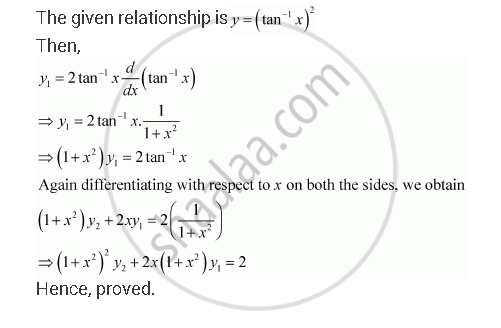



If Y Tan 1 X 2 Show That X2 1 2 Y2 2x X2 1 Y1 2 Mathematics Shaalaa Com
Simple and best practice solution for (2x1)(x2)=(12x)(x2) equation Check how easy it is, and learn it for the future Our solution is simple, and easy to understand, so don`t hesitate to use it as a solution of your homework If it's not what You are looking for type in the equation solver your own equation and let us solve it




Ex 5 3 13 Find Dy Dx In Y Cos 1 2x 1 X2 Ncert Ex 5 3




Algebra Calculator Tutorial Mathpapa




Ex 9 4 11 Find Particular Solution X3 X2 X 1 Dy Dx




If Y Tan 1 X 2 Then Prove That 1 X2 2 Y2 2x 1 X2 Y1 2 Own Classes



Http Www Princeton Edu Mwatson Misc Switz W1 Ex Pdf




If Y 1 M Y 1 M 2x Show That X2 1 Y2 Xy1 M2 Y Mathematics Topperlearning Com 31vqi0ff




Is X Y 1 2x 3 Y 3 1 3 2 X 4 Y 4 0 Data Sufficiency Ds



Area Of A Region Bounded By Curves
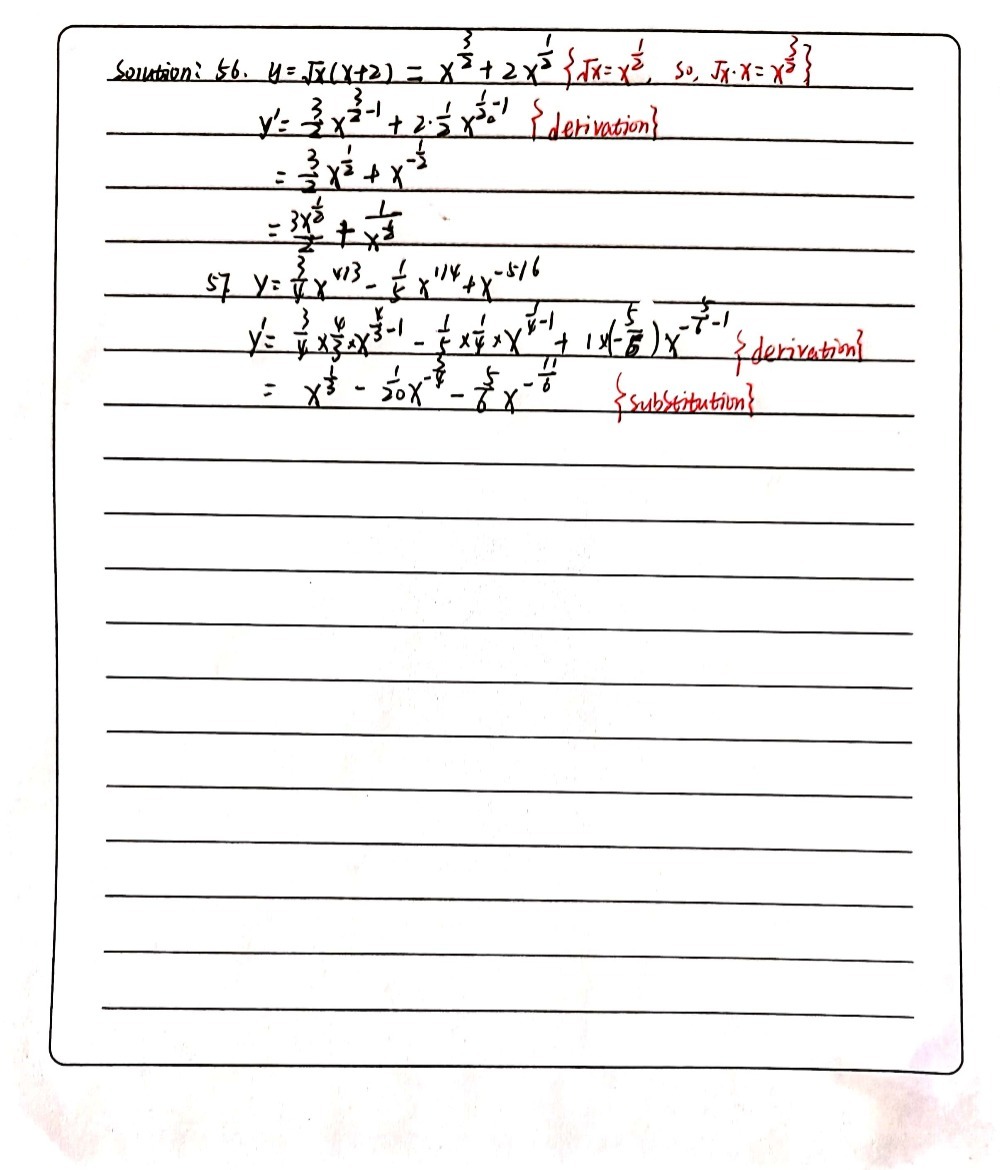



56 Find Y If Y Square Root Of Xx 2 0 A X 2x B Gauthmath




If Y Cos 1 2 X 11 4 X Then Find Dydx
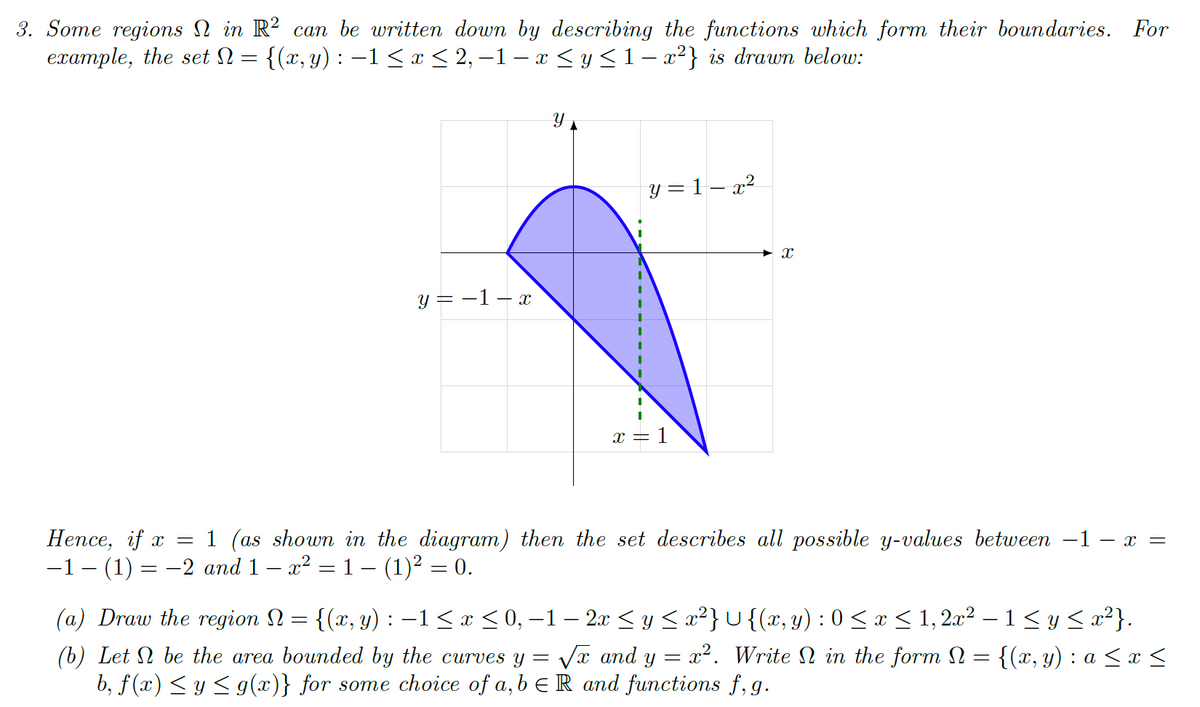



Answered 3 Some Regions N In R Can Be Written Bartleby




12 Cbse Maths 14 Solution Set 1



Multiplicative Inverse Wikipedia




Successive Differentiation And Leibnitz S Theorem Logic Functions And Mappings
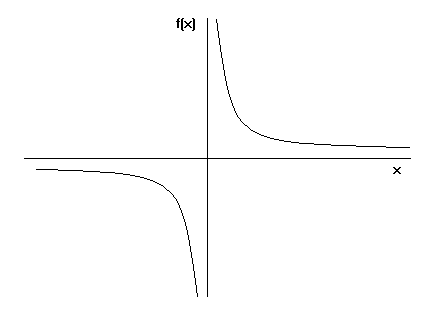



Functions Algebra Mathematics A Level Revision




Content Newton S Method




Ex 5 3 14 Find Dy Dx In Y Sin 1 2x Root 1 X2 Cbse



If X 1 2x 1 2x 1 X 1 2 What Is X Quora
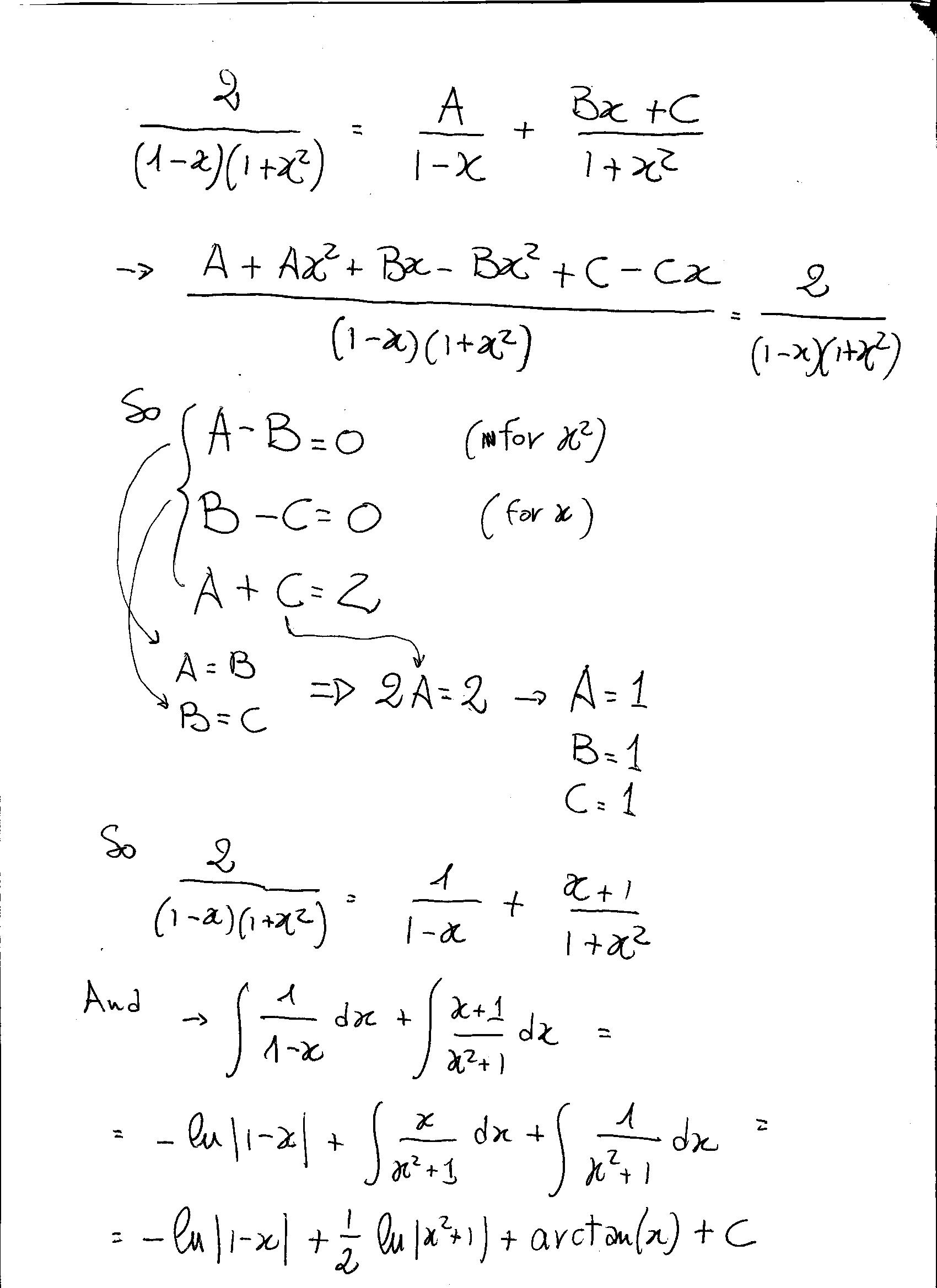



How Do You Integrate Int 2 1 X 1 X 2 Dx Using Partial Fractions Socratic




If Y Tan 1 2 X 1 2 2x 1 T H E N Dy Dx A Tx 0 Is 1 B 2 C 1n 2 D None Of T Youtube




If Y Cos 1 2x 1 X 2 Then Find Dydx



1




If Y X 2 Were Changed To Y X 1 How Would The Graph Of The New Function Compare With The First One




Ex 5 3 9 Find Dy Dx In Y Sin 1 2x 1 2x2 Chapter 5



Www Lcps Org Cms Lib4 Va Centricity Domain Diff eq ap multiple choice answers Pdf




Y Xy 3 1 X 2 1 2 Y 0 1 Harushley
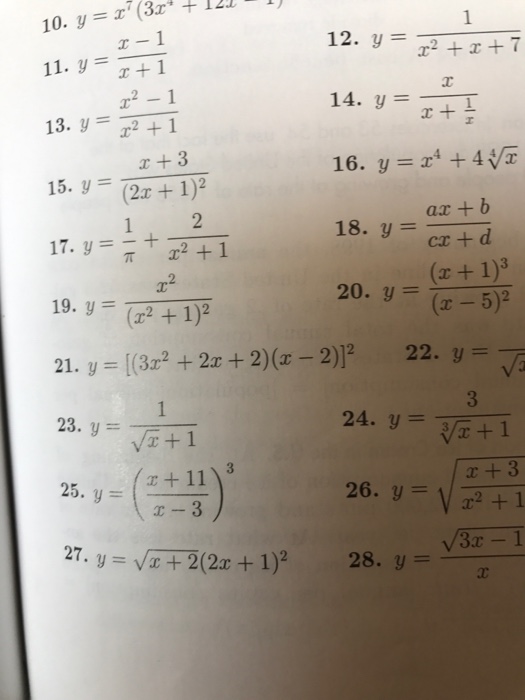



Y X 1 X 1 Y X 2 1 X 2 1 Y X 3 2x Chegg Com




Engineering Mathematics Notes




Partial Fractions Calculator Wolfram Alpha
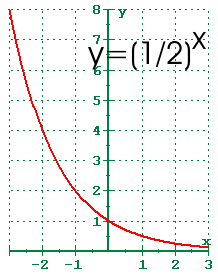



4 1 Exponential Functions And Their Graphs




Differential Calculus Ppt Video Online Download




Answers To The Review Problems For The First Exam 251 05 10 In Spring 06




Rd Sharma Solutions For Class 8 Chapter 9 Linear Equation In One Variable Download Free Pdf



2




If The System Of Equations 3x Y 1 2x 1 X K 1 Y 2x 1 Is Inconsistent Then K Brainly In
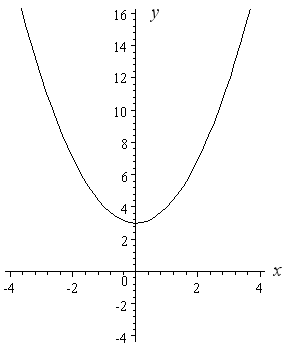



How To Draw Y 2 X 2



How To Differentiate 1 X 1 X Quora




If Y 1 X 1 X 2 2 X 3 3 Then Dy Dx A Y 1 B Y 1 C Y D Y 2




If Y Cosec 1 2x 1 X 0 Lt X Lt 1 2 Then Find Dy Dx Brainly In



2



Www Utdallas Edu Metin Or61 Simplex S Pdf



If 2x 3y 6 Z Then 1 X 1 Y 1 Z Is Equal To Polynomials Maths Class 10




If Y Tan 1 2 X 1 2 2x 1 Then Dy Dx At X 0 Is Youtube




If Y Log Sqrt X 2 X 1 X 2 X 1 1 2sqrt3 Tan 1 2x 1 Sqrt3 Tan 1 2x 1 Sqrt3 Then Prove That Dy Dx 1 X 4 X 2 1




Indefinite Integral Of 1 X Antiderivative Of 1 X Video Khan Academy




If Y Cos 1 1 X 1 X Then Find Dy Dx Youtube
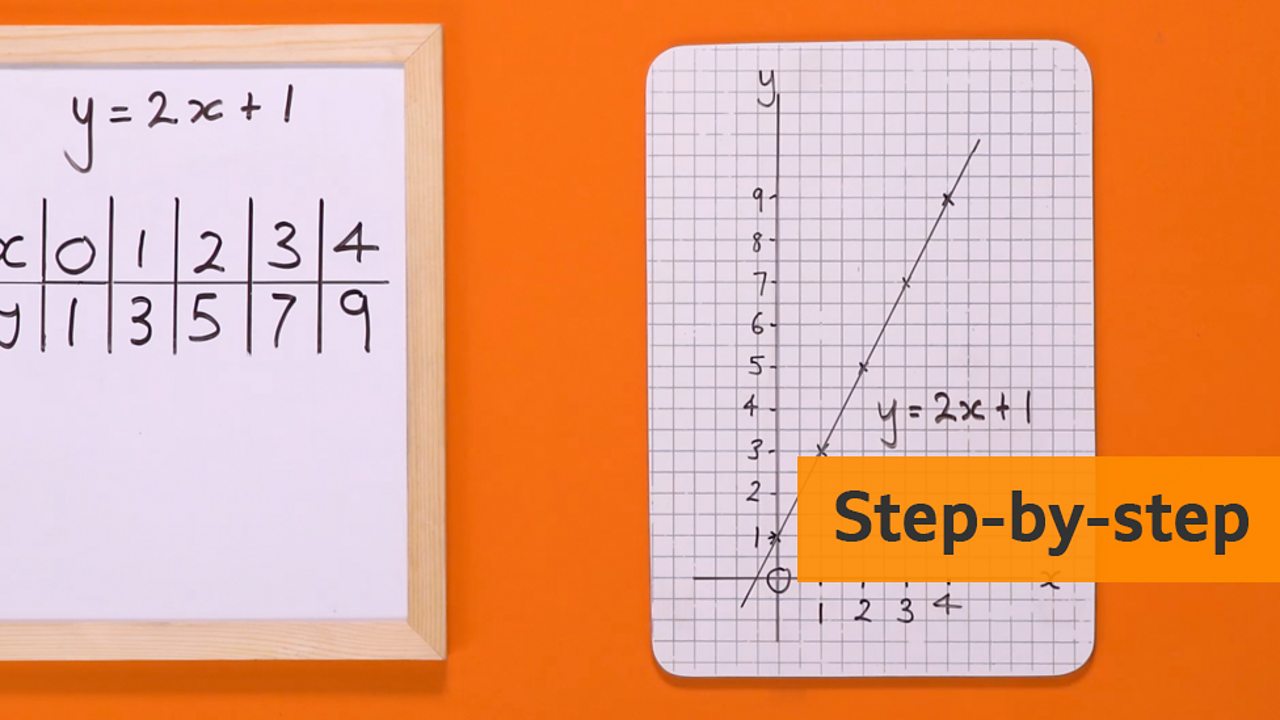



How To Draw A Graph Of A Linear Equation c Bitesize




Misc 44 Value Fo Tan 1 2x 1 1 X X2 Dx Is Miscellaneous




Step By Step Solutions




Extra Notes On Slides Ch 1 1 Numbers



Www Mathsgenie Co Uk Resources 7 Algebraic Fractionsans Pdf



2




Algebra Calculator Tutorial Mathpapa



Www Maths Ox Ac Uk System Files Attachments Mat Syllabus Practice Solns Pdf



If Y F 2x 1 X 2 1 And F X Sinx 2 Can You Find Dy Dx Quora
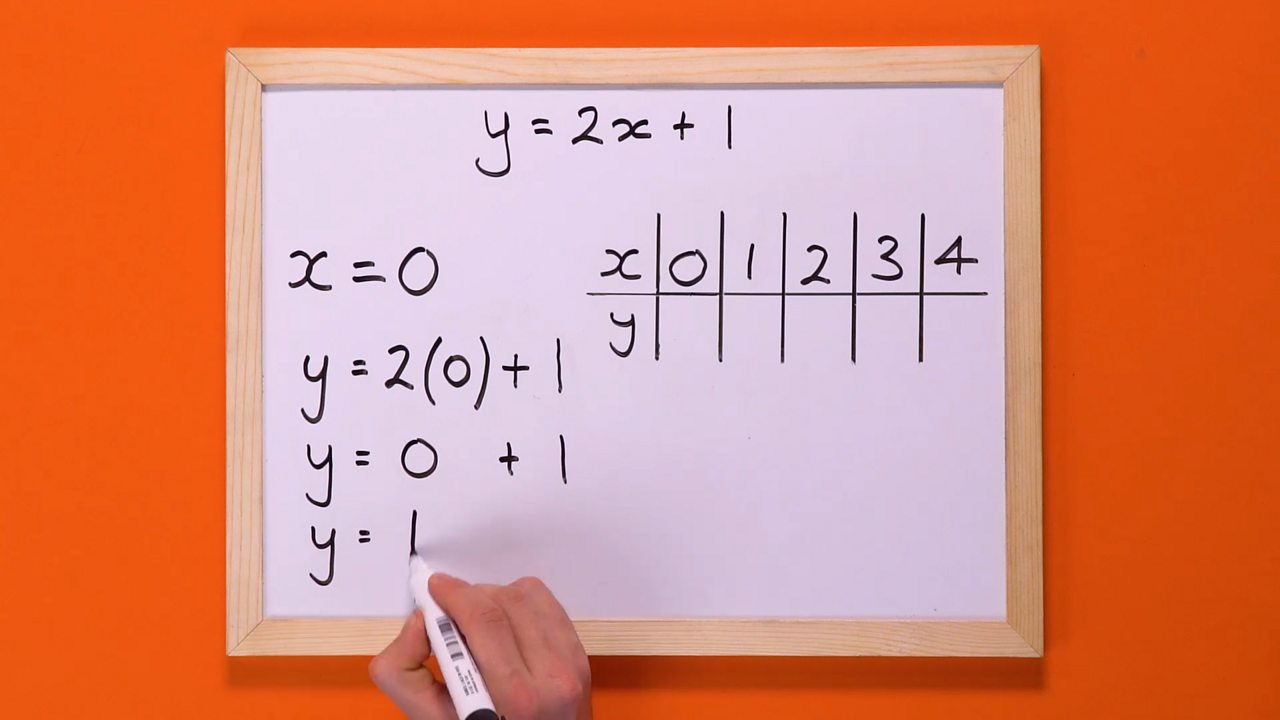



How To Draw A Graph Of A Linear Equation c Bitesize



Asymptotes




Graph Graph Equations With Step By Step Math Problem Solver




If Log Y Tan 1x Show That 1 X2 Y2 2x 1 Y1 0 Maths Continuity And Differentiability Meritnation Com
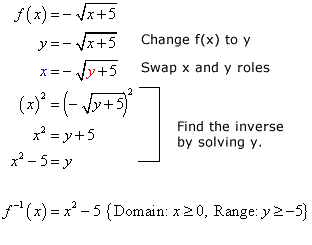



Inverse Of Square Root Function Chilimath
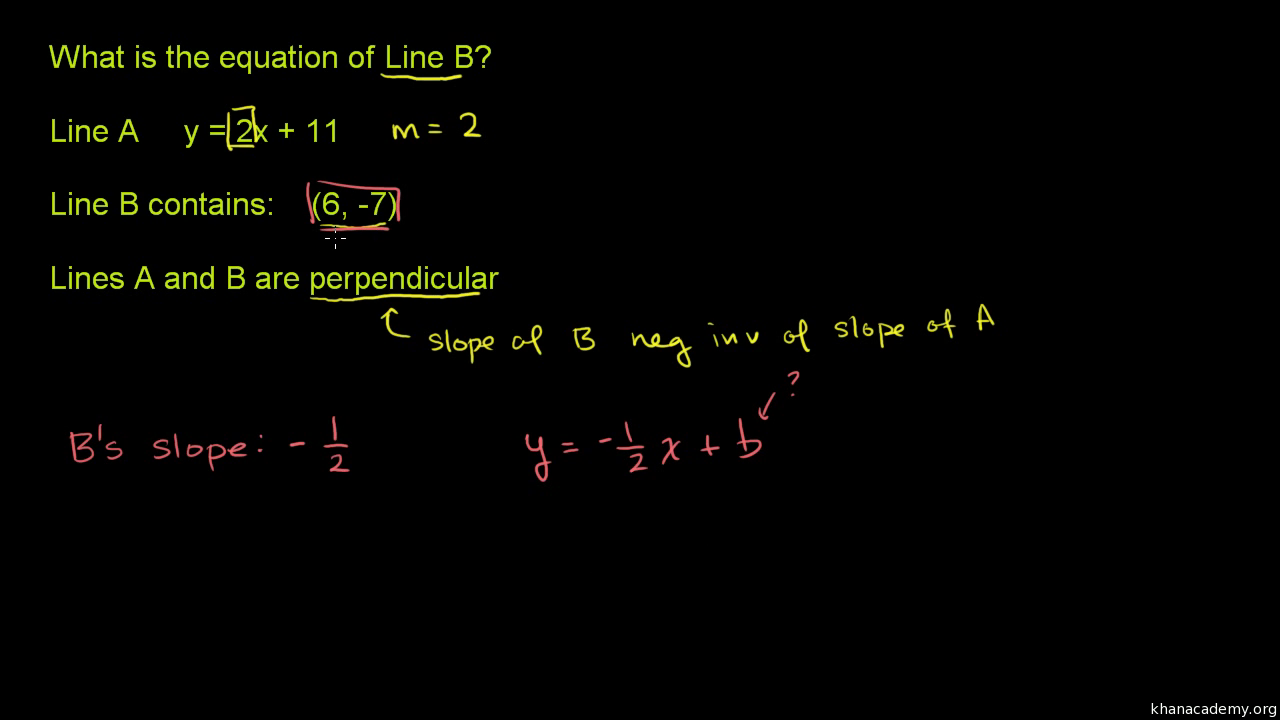



Writing Equations Of Perpendicular Lines Analytic Geometry Video Khan Academy




Transformations Of The 1 X Function Video Lesson Transcript Study Com
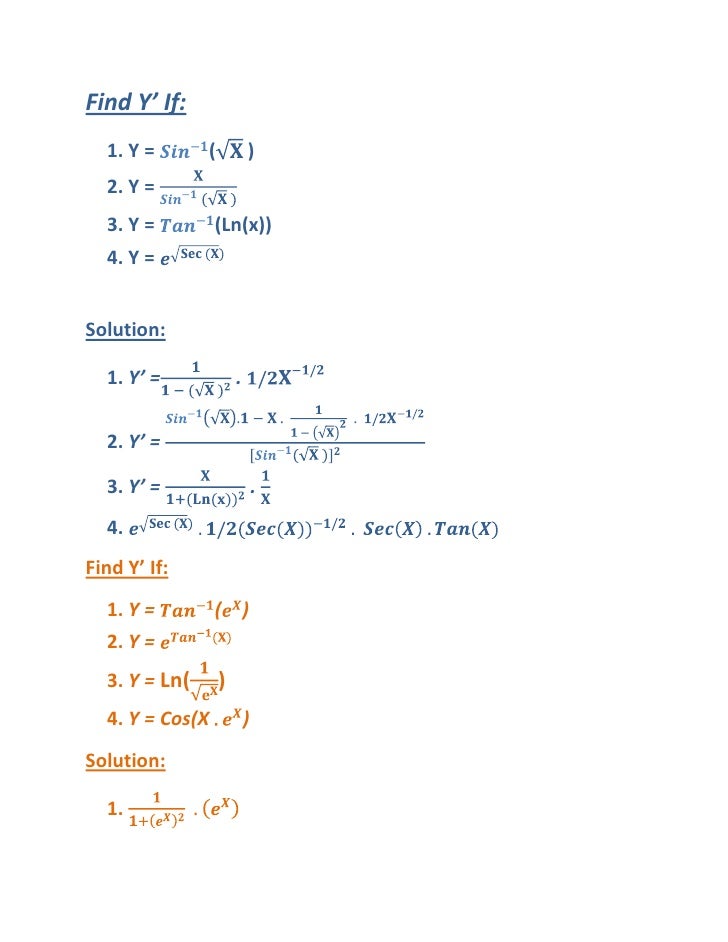



Lecture 2 Math 2
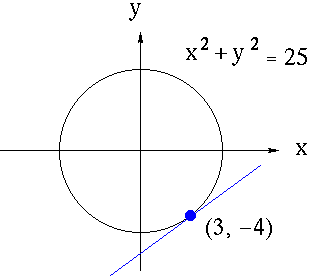



Implicit Differentiation




1 X Y 1 2x 1 30 1 X Y 1 2x 4 3




If Y 1 1 X 2 1 1 X 2 Then Dy Dx Is Equal To




3 7 Derivatives Of Inverse Functions Mathematics Libretexts
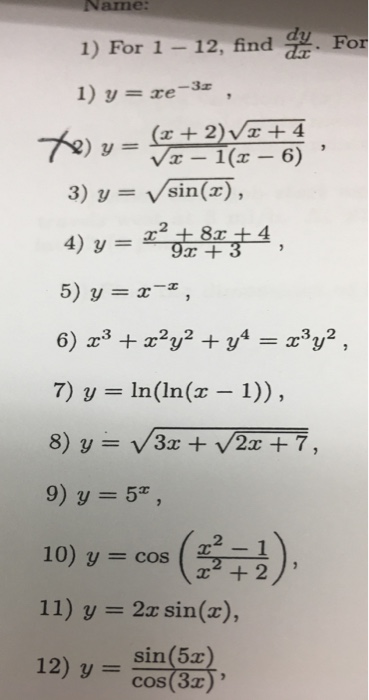



1 For 1 12 Find Dy Dx For 1 Y Xe 3x 2 Y Chegg Com



What Is The Differentiation Of 1 X 2 Quora
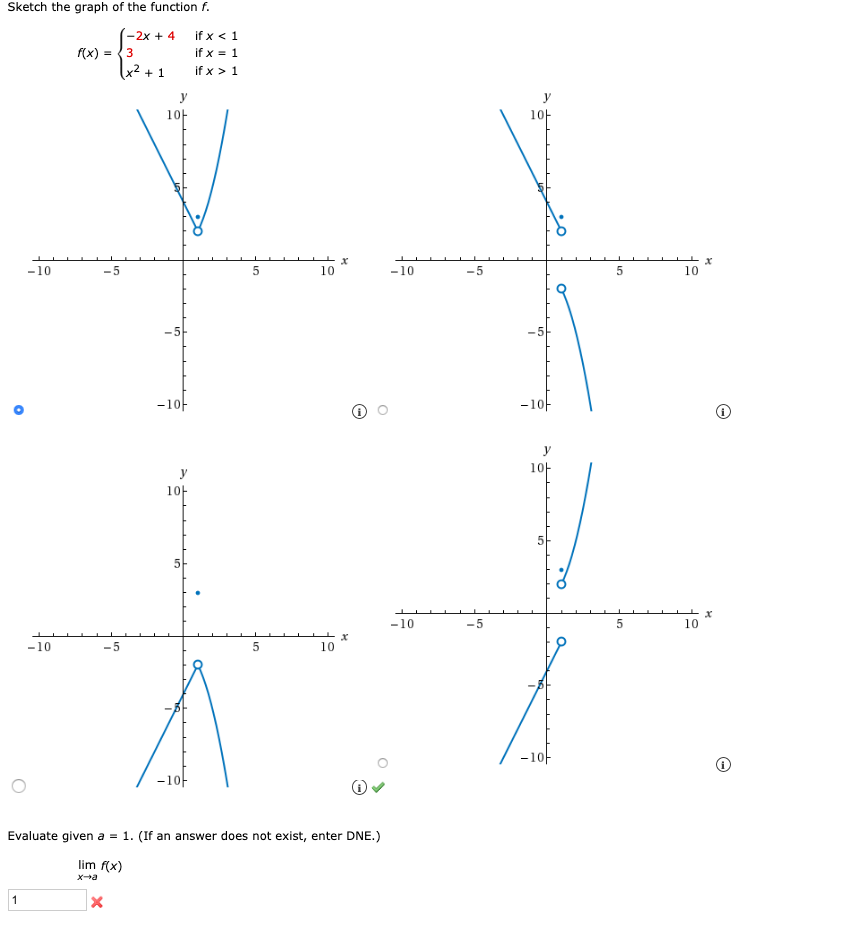



Answered Sketch The Graph Of The Function F Bartleby
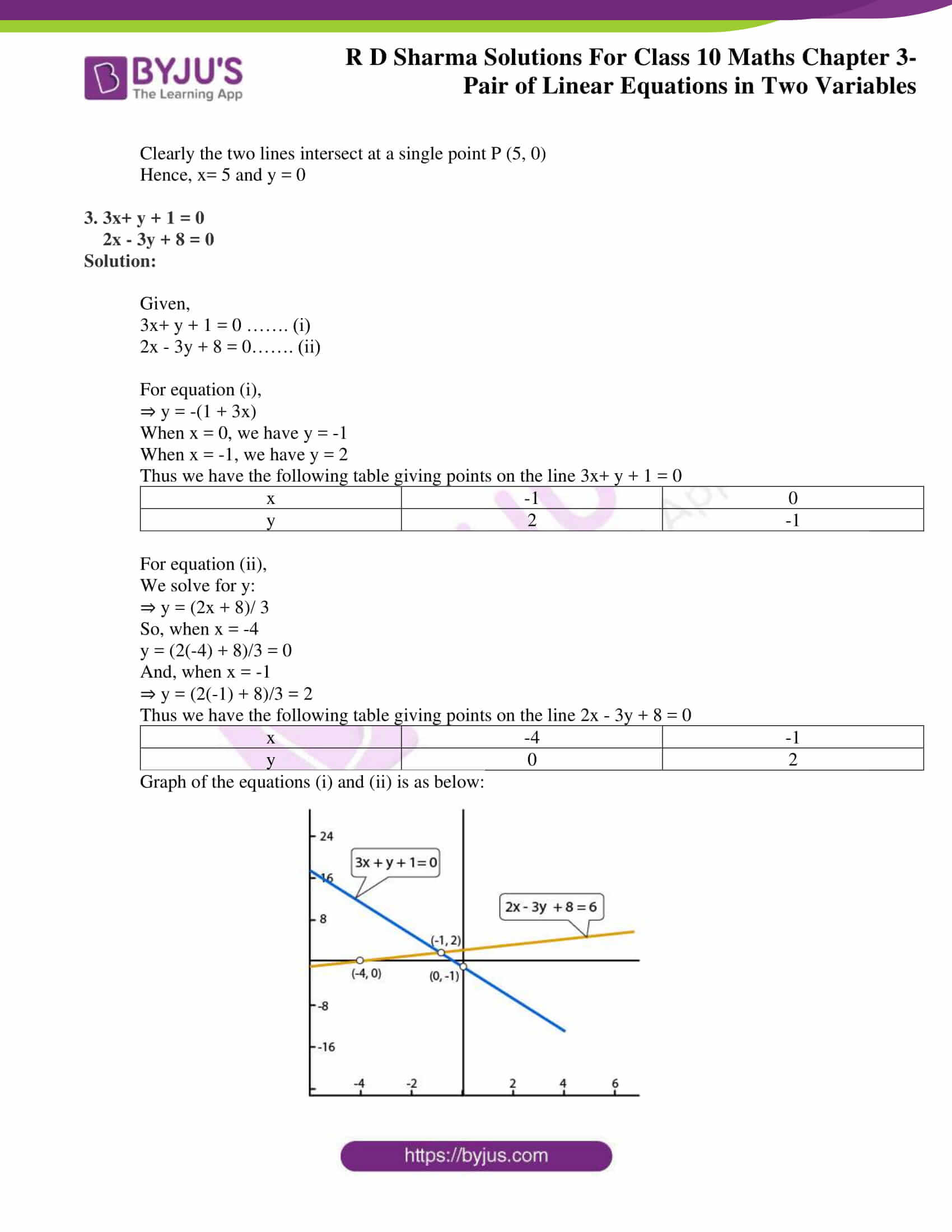



Rd Sharma Class 10 Solutions Maths Chapter 3 Pair Of Linear Equations In Two Variables Exercise 3 2



If Y Tan 1 2 X 1 2 2x 1 Then Dy Dx At X 0 Is Sarthaks Econnect Largest Online Education Community



If Y Cos 1 2x 3 1 X 2 13 Then Find Dy Dx Sarthaks Econnect Largest Online Education Community
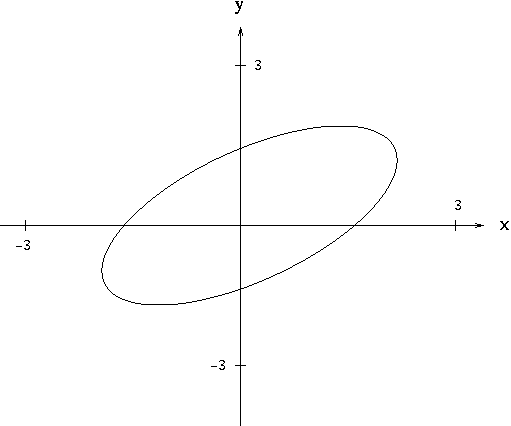



Implicit Differentiation




Non Calculator Tests Fourth Year Non Calculator Tests Click On A Number In The Table Ppt Download
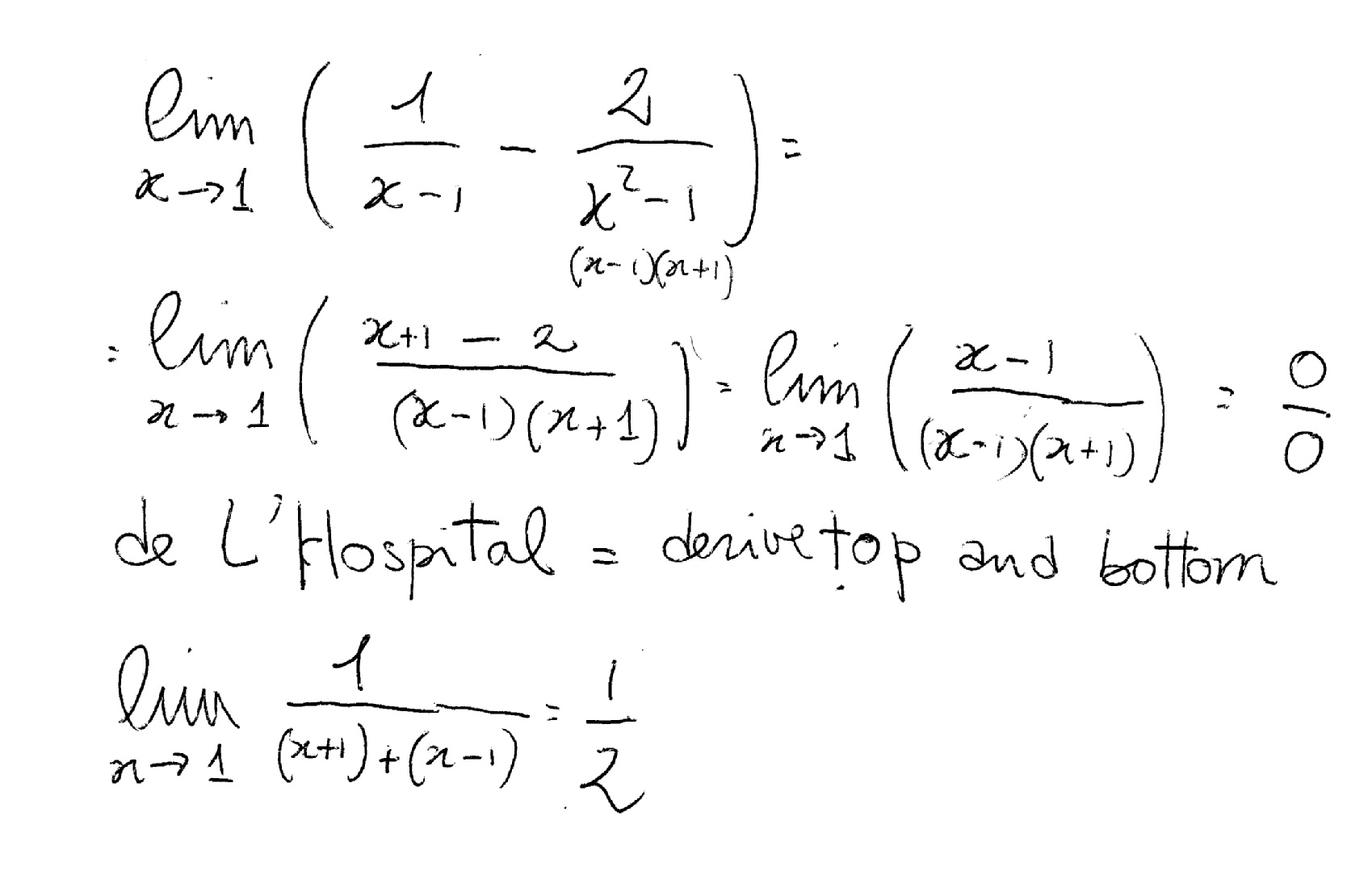



What Is The Limit Of 1 X 1 2 X 2 1 As X Approaches 1 Socratic


